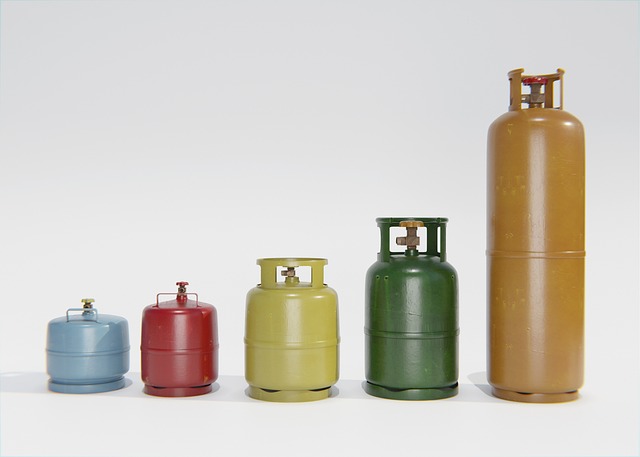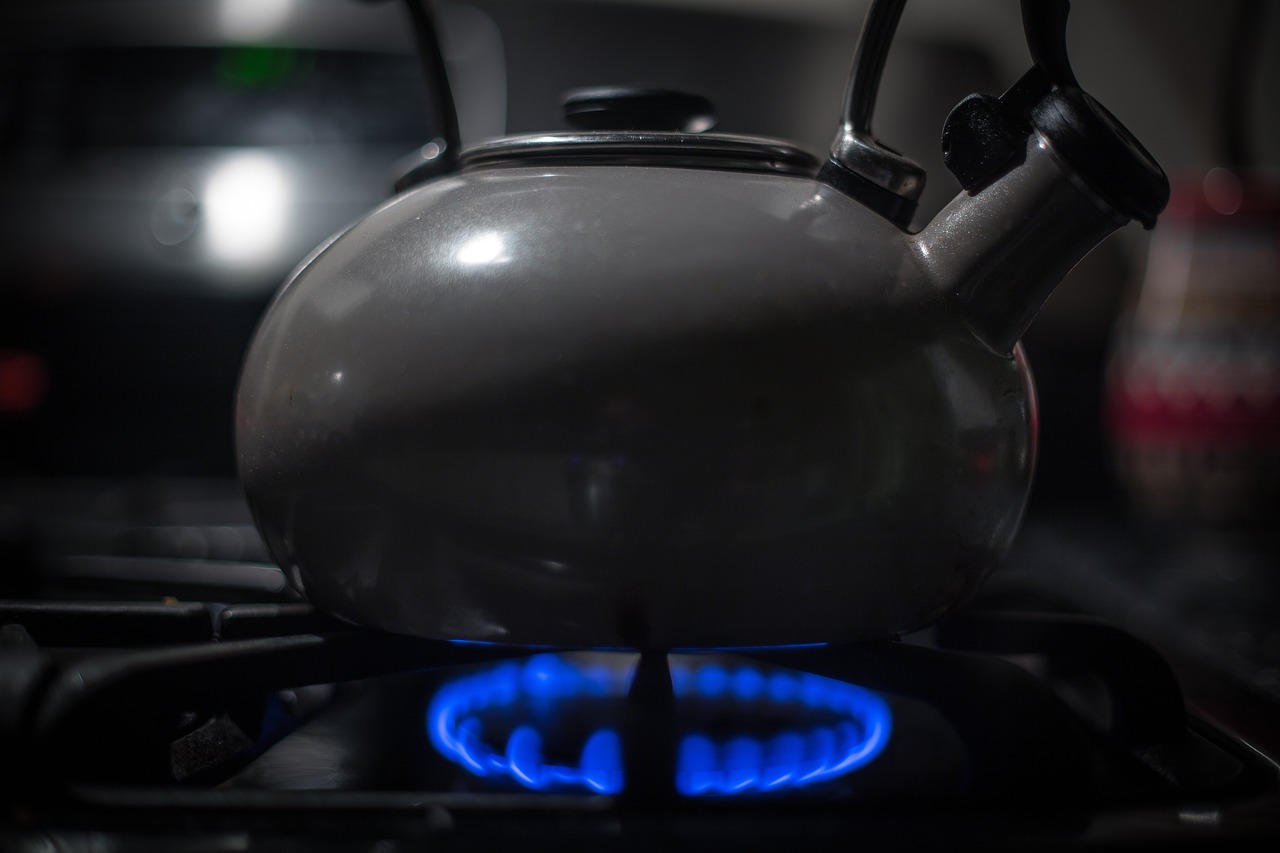Are you having trouble with your RV LPG gas system? Do you smell gas or notice your appliances not working properly? Don’t panic! With the right knowledge and tools, you can troubleshoot and solve many LPG gas system issues on your own.
In this essential guide, we will provide you with a step-by-step approach to understanding, identifying, and resolving common LPG gas system problems in your RV.
First, we’ll start with an overview of the RV LPG gas system. You’ll learn about the different components of the system and how they work together to provide fuel to your appliances.
Next, we’ll discuss the warning signs of LPG gas system issues, so you can identify potential problems before they become major safety hazards.
We’ll then dive into common problems and their solutions, including low gas pressure, faulty regulators, and leaks.
Finally, we’ll provide you with tips for ensuring an efficient and safe LPG gas system and outline safety precautions when dealing with LPG gas.
By the end of this guide, you’ll be equipped with the knowledge and skills to troubleshoot and maintain your RV LPG gas system like a pro.
Understanding the RV LPG Gas System
You’re learning about how your RV’s propane system works. The RV LPG gas system components consist of a propane tank, regulator, hoses, and appliances.
The propane tank is the main component and stores the propane gas. The regulator controls the pressure of the propane gas that flows through the hoses and into the appliances. The hoses connect the propane tank and the regulator to the appliances such as the stove, oven, and furnace.
It’s essential to understand LPG gas system regulations when using your RV’s propane system. The propane system must meet specific safety standards to prevent accidents or gas leaks.
The propane tank must be installed and secured correctly, and all hoses must be in good condition and free from cracks or damage. It’s also crucial to follow the manufacturer’s instructions when using appliances connected to the propane system.
By understanding the RV LPG gas system components and regulations, you can ensure the safety and proper functioning of your propane system.
Warning Signs of LPG Gas System Issues

If you’re experiencing strange smells or noticing inconsistent heating, it may be time to investigate potential problems with your propane setup. These warning signs can indicate leaks in your system, which can be dangerous if left unchecked.
To prevent these issues from occurring, it’s important to regularly inspect your propane tanks, hoses, and valves for any signs of wear or damage. Additionally, make sure to only use approved propane appliances and avoid overloading your system.
If you do encounter an issue with your LPG gas system, it’s important to know the proper emergency procedures. If you smell gas, immediately turn off all propane appliances, extinguish any flames, and evacuate the area. Do not attempt to turn on or off any electrical switches, and do not use any phones or electronics until you are safely away from the area.
Call your propane supplier or emergency services and let them handle the situation. Regular maintenance and caution can go a long way in preventing LPG gas system issues, but it’s important to always be prepared for the worst-case scenario.
Common LPG Gas System Problems and Solutions
Get ready to tackle some real headaches as we dive into the most annoying problems you may encounter with your propane setup, and learn some easy-peasy solutions to fix them.
One of the most common issues with LPG gas systems is leakage. If you smell gas inside your RV or near the tank, it’s important to act fast. Turn off all appliances, the main gas valve, and any other sources of ignition.
Open all windows and doors to ventilate the area and evacuate the RV.
Next, locate the leak by using soap and water solution to check for bubbles at connections, fittings, and valves. If you find a leak, try tightening the connection. If it still leaks, you may need to replace the faulty part.
Always use Teflon tape or pipe dope to seal threads properly. Additionally, check the propane tank for damage or rust, and have it inspected by a professional if necessary.
With these troubleshooting techniques, you can prevent dangerous gas leaks and keep your propane system running smoothly.
Conducting Regular Maintenance Checks
Don’t neglect your propane setup – keep it in tip-top shape with regular maintenance checks to ensure optimal performance and avoid potential hazards.
Preventative measures are essential to ensure that your LPG gas system is functioning correctly. Conducting regular maintenance checks is one of the most effective ways of ensuring the longevity of your propane setup.
DIY maintenance is an excellent way to save money and keep your LPG gas system in excellent condition. Regular checks should include inspecting all hoses and fittings for signs of wear and tear, ensuring that all valves function correctly, and checking for gas leaks. Additionally, it’s essential to check the regulator for damage and make sure that it’s working correctly.
By conducting regular maintenance checks, you can identify potential hazards and address them before they become more significant issues.
Safety Precautions When Dealing with LPG Gas
You need to prioritize your safety when handling propane, so take precautions to prevent accidents and protect yourself from harm.
One of the most important safety measures is to ensure proper ventilation when using LPG gas. Propane gas is heavier than air and can accumulate in enclosed spaces, leading to an explosion or fire. You should always make sure that the area where you are using propane is well-ventilated, with windows and doors open to allow for the free flow of air. It’s also essential to never use propane in a confined space, such as a tent or RV, without proper ventilation.
Another critical safety precaution when dealing with LPG gas is to know the emergency procedures in case of a leak or other incident. You should have a fire extinguisher nearby and know how to use it. Additionally, you should know how to shut off the propane supply to your RV or other equipment in case of an emergency. This will help prevent further damage or injury and allow you to act quickly to ensure your safety and that of others around you.
By following these safety tips, you can ensure that you’re handling propane gas safely and responsibly, protecting yourself and others from harm.
Seeking Professional Help When Needed
Now that you know how to handle LPG gas safely, it’s important to understand when to seek professional help. Even with the best precautions and knowledge, there may be issues with your RV’s LPG gas system that require the expertise of a trained professional. This is especially true when it comes to repairing or replacing any components of the system.
When seeking professional help for your RV’s LPG gas system, the importance of certification can’t be overstated. Make sure that the technician or company you hire holds the proper certifications and licenses for working with LPG gas systems. This will ensure that they have the necessary knowledge and experience to handle any issues safely and effectively.
Additionally, it’s important to do your research and find reputable professionals in your area. Look for reviews and recommendations from other RV owners to ensure that you’re hiring someone who will provide quality service.
By taking these steps, you can have peace of mind knowing that your RV’s LPG gas system is in good hands.
Tips for Ensuring an Efficient and Safe LPG Gas System
Let’s explore some handy tips to keep your RV’s propane setup running smoothly and safely.
First and foremost, it’s important to regularly inspect your LPG gas system for any signs of wear and tear. This includes checking the hoses and connections for leaks, ensuring that the tanks are properly secured, and verifying that all appliances are functioning correctly.
Additionally, it’s best practice to always turn off the propane supply before driving your RV, as this can help prevent gas leaks or other hazardous situations.
Another tip for maintaining an efficient and safe LPG gas system is to never use low-quality or expired propane. Always purchase high-quality propane from a reputable supplier, and be sure to regularly check the expiration date on your propane tanks.
Additionally, it’s important to keep your propane tanks clean and free of rust or debris, as this can affect the overall performance of your propane system.
By following these tips and best practices, you can ensure that your RV’s LPG gas system is operating at its best, while also reducing the risk of accidents or malfunctions.
Frequently Asked Questions
How do I determine if my RV is compatible with an LPG gas system?
Before installing an LPG gas system in your RV, it’s crucial to perform a compatibility check. This involves checking your RV’s weight capacity, fuel tank size, and engine type, among other factors. Once you’ve confirmed compatibility, you can move on to the installation requirements. These may include adding additional safety features or upgrading certain components.
It’s essential to follow these requirements carefully to ensure that your LPG gas system operates safely and efficiently while you’re on the road. Remember, rushing through the installation process can lead to costly and dangerous errors down the line.
So take your time, do your research, and make sure you’re fully informed before getting started.
Can I use regular propane tanks for my RV LPG gas system?
If you’re wondering whether you can use regular propane tanks for your RV LPG gas system, the answer is yes. However, it’s important to consider the propane tank sizes and refilling options.
Regular propane tanks can come in different sizes, with the most common being 20-pound tanks. These tanks can be refilled at propane filling stations, but it’s important to note that not all filling stations may be able to fill RV-specific tanks.
It’s also important to ensure that the tank is securely fastened to your RV and that you’re using the appropriate regulator to control the gas flow. Overall, using regular propane tanks can be a convenient and cost-effective option for your RV LPG gas system. Just make sure to take the necessary precautions and follow proper refilling procedures.
Is it safe to use LPG gas for cooking inside an RV?
When it comes to using LPG gas for cooking inside your RV, safety precautions should always be your top priority. It’s important to follow proper ventilation requirements to avoid any potential hazards.
Make sure that your RV’s ventilation system is in good condition and that it’s working properly. Keep windows and doors open to allow fresh air to circulate inside your RV. Always keep a fire extinguisher nearby in case of emergencies.
Remember to turn off your stove when you’re not using it, and be cautious when handling LPG gas tanks. By following these safety tips, you can enjoy cooking inside your RV without any worries.
How do I properly dispose of old LPG gas tanks?
Are you wondering what to do with your old LPG gas tanks? Proper disposal is essential to ensure that they’re not hazardous to the environment.
One option is to recycle them. Many recycling centers accept propane tanks, and they can be repurposed into new products. Before recycling, make sure to empty the tank completely and remove the valve.
You can also check with your local waste management facility for proper disposal instructions. Avoid throwing them in the trash or leaving them outside where they can be a fire hazard.
Take the responsible route and dispose of your old LPG gas tanks properly.
Are there any government regulations or guidelines I should be aware of when using an RV LPG gas system?
When using an RV LPG gas system, it’s important to be aware of government regulations and safety guidelines. The government has strict regulations in place to ensure the safety of those using LPG gas systems.
Safety guidelines are also in place to help prevent accidents and injuries. It’s essential to follow these regulations and guidelines to avoid any potential safety hazards. Always remember to properly maintain your RV LPG gas system, follow the manufacturer’s instructions, and have it inspected regularly to ensure its safety.
Additionally, make sure to only use approved equipment and never attempt to modify any part of the system. By following the regulations and guidelines, you can feel confident in using your RV LPG gas system and ensure the safety of yourself and others.
Conclusion
Congratulations! You’ve successfully learned how to troubleshoot your RV LPG gas system.
As you hit the road, you may encounter a few bumps along the way, but with the knowledge you’ve gained, you can confidently handle any gas system issues that arise.
Think of your RV LPG gas system as the heart of your mobile home. Just as you monitor your heart’s health, it’s essential to conduct regular checks on your LPG gas system to ensure it’s running efficiently and safely.
Remember, safety comes first, and taking the necessary precautions can prevent accidents and save lives.
By following the tips you’ve learned in this essential guide, you can ensure that your RV LPG gas system is always in top shape.
So, hit the road with confidence, knowing that you have the knowledge and skills to tackle any LPG gas system issues that may come your way.
Safe travels!




